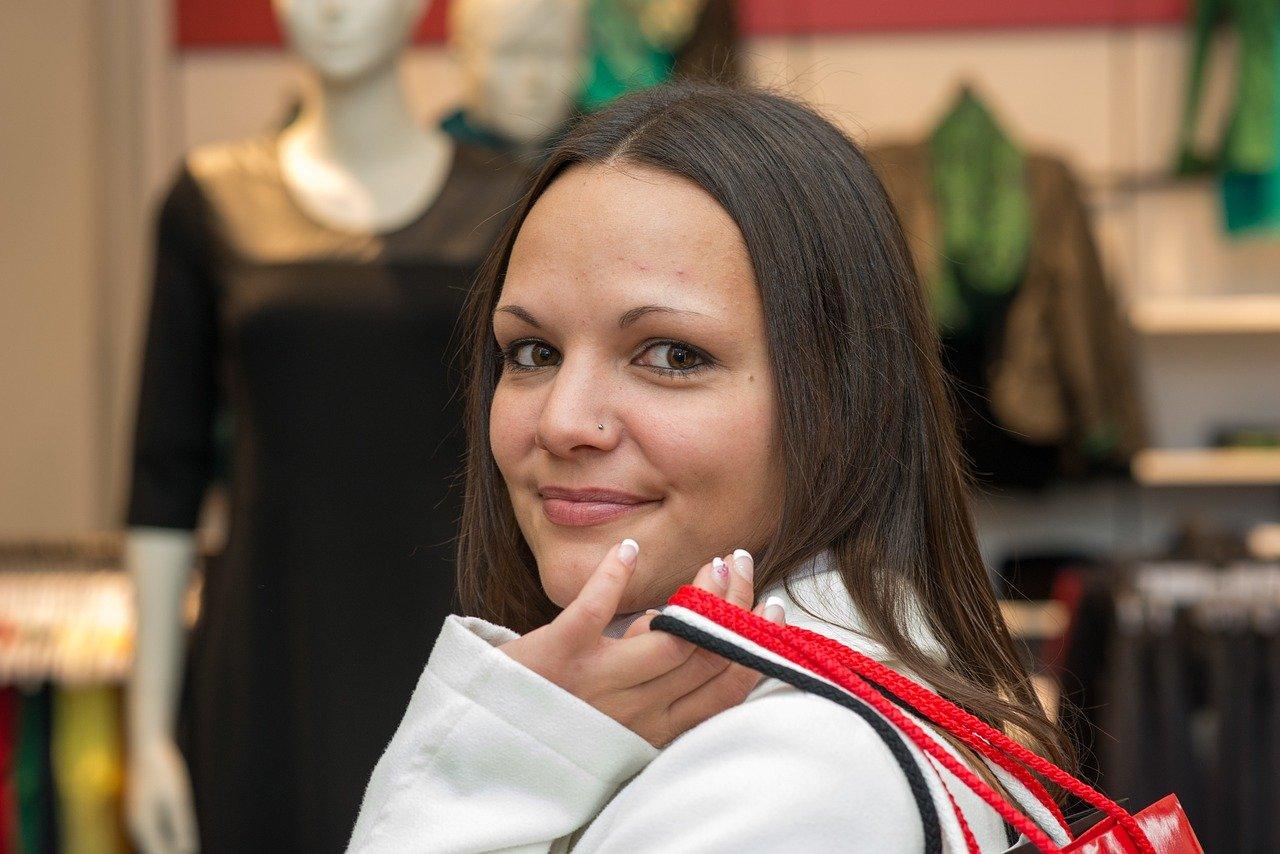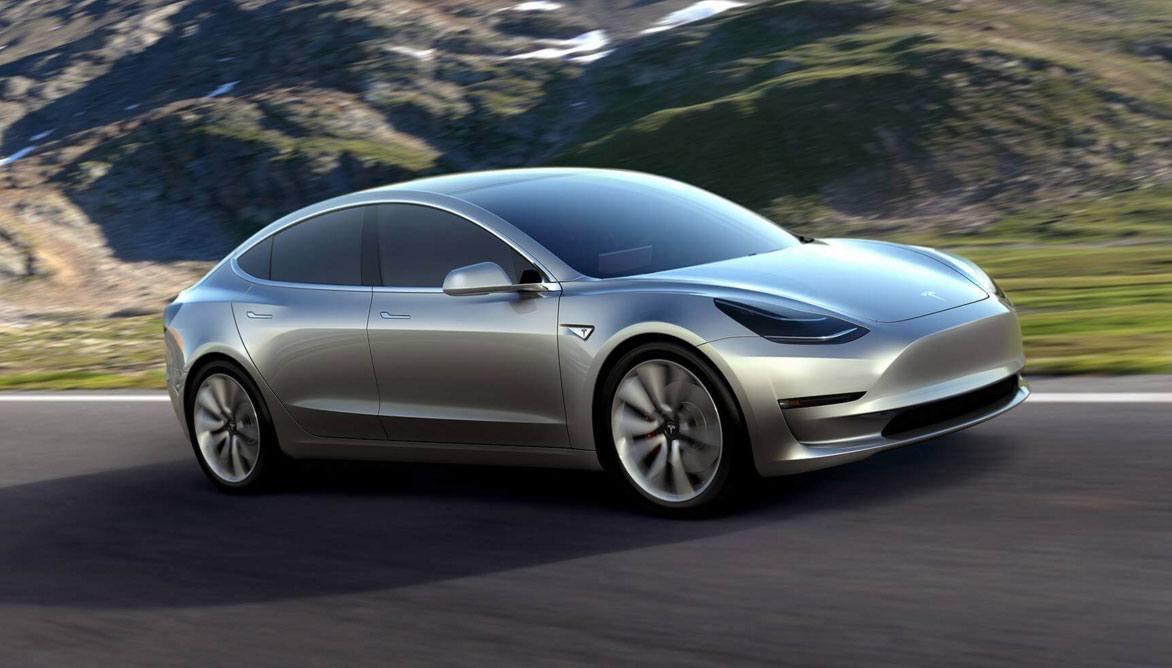Women Still Have an Uphill Climb in the World of Sports


Serena Williams
Despite the passage of Title IX over 40 years ago and the growing success of women’s athletics worldwide, both collegiate and professional sports are still very much a boy’s world.
The recent comments of Raymond Moore sum up the indignities female professional athletes endure. Moore, who was the director of the Indian Wells tournament near Palm Springs until he put his foot in his mouth, lit a firestorm with his cloddish comments about women tennis players -- and his boorish behavior made headlines across the globe.
Claiming that female tennis stars were riding on the success of their male counterparts, Moore told sports reporters that women tennis players should “go down every night on [their] knees and thank God that Roger Federer and Rafa Nadal were born, because they have carried this sport." Larry Ellison, founder of Oracle and also the owner of the Indian Wells tournament, did not wait long to give Moore his pink slip. Ellison really had little choice, as Serena Williams suggested a boycott against the tournament would be in order for next year. That threat alone shows that women professional athletes have economic power, at least in some sports.
Not wanting to be left out of the fracas, Novak Djokovic, currently the top-ranked men’s tennis player in the world, lobbed an ill-timed volley when he suggested men’s players should fight for more money since they attract more spectators. Of course he neglected to give examples while insisting that statistics backed up his statement.
One would think that, considering his background, Djokovic would have been more thoughtful for two reasons. First, he hails from Serbia, a country that ranks in the top-third of nations when it comes to women’s rights, indicative of the Balkan region’s progress on issues related to women despite a brutal war a generation ago. Given the pride Djokovic engenders from his countrymen and countrywomen, he should speak more carefully as a country representative.
Second, the surge in popularity of women’s tennis just does not support the idea that men are far more of a draw than women. The tickets to women's events, especially those for the Grand Slam tournaments, are highly coveted. That's in part why Wimbledon has doled out equal prize money for men's and women's matches since 2007, and the Australian, French and U.S. open tournaments followed suit shortly after.
The big difference in earnings, however, does not necessarily stem from what men and women make on these international tours by actually playing the game, but rather when it comes to sponsorship money. Many of the top-earning male athletes have made a mint on endorsements, especially boxers, male soccer icons, American football players, NBA stars and, of course, baseball players.
For women athletes, however, the total sponsorship money is relatively paltry. And one can make the case that race has an issue. Serena Williams may be the No. 1 player on the professional women’s circuit, but she made $10 million less from endorsements than Maria Sharapova, who is at the moment No. 12 within those rankings and has had an injury-riddled career.
Add the fact that men’s sports have often been an embarrassment at an international level, from boxer Manny Pacquiao’s description of gays, to Johnny Manziel’s abusive behavior, to footballer Adam Johnson’s recent conviction for having sex with an underage girl, the fact that women’s sports elicit little more interest than snark from many men and women is particularly galling.
The only other professional sports to guarantee equal prize money are the major world marathons and World Surf League. Nevertheless, despite the fact that women make up 57 percent of college students in the U.S., they only comprise 43 percent of student-athletes. Women’s collegiate sports are also lacking when it comes to scholarship dollars and operating expenses. With fewer opportunities during the university years come almost no opportunities at the professional level, except in women’s tennis and golf (and, in part because of Rhonda Rousey, martial arts).
The reasons why women’s professional sports have sputtered in popularity is in part economic. The four major sports leagues in the U.S. (MLB, NFL, NBA and NHL) have become ingrained in North America’s sport culture -- there is little room for another sporting league, although Major League Soccer has thrived in some media markets (but nowhere near the level of the sport’s popularity in Europe and Latin America). Women’s soccer briefly hit a high point after the 1999 Women’s World Cup, and Brandi Chastain’s shirt-wielding moment at the Rose Bowl after a penalty kick shootout, but that sport, too, has struggled to gain traction.
The Women’s National Basketball Association (WNBA) has had some staying power, but it plays during the summer, between the NBA’s championship and opening days. Women who play in that league earn a sliver of their male counterparts, and many play in another women’s league overseas so they can make end’s meet.
So, if you have a sister, daughter or niece that is determined to make a living in professional sport, what are we to do? In two words, says the Women’s Sports Foundation: Be supportive. Attend games; patronize the companies that sponsor women’s sports; push the local media to cover women’s sporting events; offer to coach in a girl’s league if an opportunity comes up; and speak up and take action if you know of a female athlete who is being discriminated against. Such support will be needed from everyone if women's prowess on the field is to be celebrated more frequently than the Olympics every couple of years.
Image credit: Flickr/Yann Caredec
Educating Consumers About Buying Sustainably


Sustainability is a word tossed around much these days. But do consumers really care about buying sustainably? The answer is yes. More and more consumers are interested in sustainability, as surveys show. A 2011 consumer survey by Nielsen found that 66 percent of socially-conscious consumers cited environmental sustainability as the most important issue from a list of 18 issues.
So, how do you increase awareness of buying sustainably among consumers? The key is getting information to them. A study by Michigan State University researchers, published in 2014 in the Business and Economics Journal, looked at consumer awareness of fair trade information. The researchers found that informed consumers “are better positioned to make sound decisions and take the appropriate actions to address sustainability issues.” Providing access to “complete and accurate sources of information allows consumers to draw the connection between their consumption behaviors and social, and environmental sustainability,” the researchers concluded.
The Better Cotton Initiative (BCI) is all about sustainable cotton and its members “are some of the largest apparel and textile companies in the world,” as Amanda Dooley, public relations officer at BCI, told TriplePundit. The nonprofit organization and its members play an important role in educating consumers about sustainably produced products.
BCI’s pioneer members are Adidas, H&M, Ikea, Nike, Levi Strauss & Co. and M&M. All have set ambitious targets for sourcing sustainable cotton and recently communicated to their customers about their achievements in meeting the targets. For example, Adidas announced that it exceeded its 2015 Better Cotton target of 40 percent as it sourced 45 percent Better Cotton last year. In the press release, Adidas explained that BCI “exists to make global cotton production better for the people who produce it, better for the environment it grows in and better for the sector’s future.”
“Today, global consumers are well educated about sustainability, and they are willing to put their money where their heart is,” said Paola Geremicca, fundraising and communications director for BCI. “A brand’s social purpose is among the factors that influence purchase decisions.”
Using the Internet to educate consumers
Buying sustainably-produced food can be a daunting problem, as Chris Hunt, special advisor on food and agriculture for the nonprofit Grace Communications Foundation, told TriplePundit. “Most food in the U.S. is produced by the industrial food system, and that creates huge problems for human health, for the environment, for communities and for animal welfare,” Hunt said. “The alternative -- sustainably-produced food -- allows us to feed ourselves without creating any of those problems.”
What the organization's Sustainable Table initiative does is “educate people about these problems and then present the benefits of the alternative, of sustainable agriculture, and provide people with tools and resources for making better food choices,” he explained.
Using the Internet is a major way to inform consumers about the importance of buying sustainably. A case study looked at the Sustainable Table program, which seeks to educate consumers about food-related issues. The case study specifically looked at Sustainable Table’s use of the Internet to communicate with consumers. The program has three different websites, a parody of the movie "The Matrix" called "The Meatrix," and tools such as a guide to finding sustainable food producers.
The case study found three main lessons to be learned from Sustainable Table’s successful use of the Internet to educate consumers:
- It is important to take risks when experimenting with new types of media. Since the beginning of the program in 2003, Sustainable Table embraced the Internet and found ways to use it to inform consumers.
- Making sure intended audiences have tools, resources and avenues to take actions on the issues addressed is key.
- Plan in advance for success, and use a variety of media, formats and channels to get the program’s messages across and distributes its tools.
Buying sustainably sometimes means buying less
Making products last a long time is a key part of sustainability. And buying sustainably can sometimes mean buying less. That’s a philosophy Patagonia believes in strongly, as the company's director of global communications, Adam Fetcher, explained to TriplePundit. “This is a philosophy Patagonia has held for a long time, really since our founding,” he said. “We've always been committed to making the best possible clothing for the outdoors.”
To communicate the importance of repairing outdoor gear instead of just throwing it away and buying new pieces, Patagonia created the Worn Wear program. Worn Wear has existed since 2013, but extends the philosophy the company has had since its inception. Last year, Patagonia held the "Worn Wear Tour," which included a truck called the Worn Wear Wagon, and went around the country with a mobile repair station. The company taught people how to make their own simple repairs -- from putting on buttons or patches on their garments. Two technicians were also on hand to do more complex repairs for people.
“We repaired thousands of garments along the way, and even more importantly, we taught people about the importance of keeping their stuff in use as long as possible,” Fetcher said.
Around Black Friday, Patagonia released 40 different repair kits online. A year ago on Black Friday, the company hosted swap events where customers either exchanged their gear with one another or picked up something used. Fetcher said that the Black Friday events and the Worn Wear program are “all just in service of communicating our core value -- that as a consumer the best thing you can do for the planet is keep your stuff in use longer.”
How to sift through eco-labels
Looking for products with eco-labels is the easiest way to buy sustainably. But sifting through the various eco-labels can be daunting. So, here’s a brief overview of them.
- The U.S. Department of Agriculture (USDA) certifies that a farm or ranch uses organic methods. What that means is that farmers use only natural means to grow produce or raise livestock. In other words, herbicides and pesticides are not used, and neither are growth hormones. Farms are inspected annually by the federal agency.
- Fair Trade USA certification means that equitable trade practices are used throughout the supply chain, ensuring that farmers and producers receive a fair price. According to Fair Trade USA, its partner companies range from small coffee roasters to large transnational corporations.
- The Animal Welfare Approved (AWA) label on meat and dairy products ensures that they come from farm animals raised with good animal welfare and environmental standards.
- The Forest Stewardship Council (FSC) protects forests and its label means that wood products have been certified to come from responsibly managed forests.
- Energy Star is a program of the U.S. Environmental Protection Agency (EPA) to help businesses and individuals save money and help the environment through energy efficiency. An Energy Star label means that a product is energy efficient.
- The EPA’s Watersense helps people save water through products that are water efficient. Products with the label mean that they have been independently certified to save water.
Image credit: Pixabay
Women Soccer Players File Lawsuit Over Wage Discrimination


The U.S. women’s soccer team has won three World Cup championships, narrowly lost in 2011 and made the semi-finals in the women’s quadrennial world tournament three times. Last year’s victory over Japan in the championship game was watched by 23 million Americans, a record for any televised soccer game in the U.S. In contrast, the men’s team placed third only once, in 1930, and made the quarterfinals one time.
Ask many Americans who the most influential soccer players are, and the chances are high that names including Mia Hamm, Brandi Chastain, Hope Solo and Amy Wambuch (well, before her most recent legal troubles) are mentioned before anyone on the men’s team. Yet, as is the case with many women’s sports, playing ball for women is very much an uphill climb when it comes to economics and recognition in what is still a man’s world.
Despite their long run of success, the women soccer players on the U.S. team believe they are making salaries that are vastly unfair compared to their male counterparts. In fact, this group of athletes pointed out that they generated more funds than the U.S. men's team last year, are on target to make more revenues for the U.S. Soccer Association in 2016-17, and have overall made a similar amount of money as the men’s squad for the U.S. Soccer franchise over the past several years.
Yet despite the U.S. women’s soccer team having greater success on the field and at the gate, the Wall Street Journal pointed out that there is a huge disparity between male and female soccer players. Women’s players earn a base salary of $72,000 annually to appear in 20 exhibition games, or “friendlies,” each season. Victory bonuses can boost that figure up to almost $100,000. Athletes on the U.S. men’s team, however, earn a minimum of $5,000 per friendly, win or lose; and depending on the opponent’s team ranking, they can score up to an additional $17,625 a game. Women soccer players, on the other hand, only earn an extra $1,350 if the team wins a friendly.
The female players who filed a complaint with the U.S. Equal Employment Opportunity Commission (EEOC), which include Solo, Carli Lloyd, Alex Morgan, Becky Sauerbrunn, Megan Rapinoe and Alex Morgan, infers that U.S. Soccer has taken their victories for granted. They point out the current pay structure in place, which awards each player a $75,000 bonus if the U.S. team wins the World Cup. U.S. men's players, however, could win up to $400,000 (not that it would ever happen, with countries such as Argentina, Brazil, Germany, Italy and Spain long dominant in international men’s soccer). The difference between the last two international World Cup winners is staggering: Germany’s national soccer organization earned $35 million for its 2014 World Cup championship, while U.S. Soccer received $2 million for last year’s victory.
The revenue disparity is especially insulting to the U.S. women’s team when one considers the conditions in which women have had to play compared to men, especially during the 2015 tournament. FIFA, global soccer’s governing body, has long banned the men’s World Cup tournament from being played on artificial turf as it poses a higher risk of injury. For example, when some matches were played in suburban Detroit’s Pontiac Silverdome during the 1994 Men’s World Cup in the U.S., FIFA regulations required that the stadium’s operator temporarily replace its artificial grass surface with natural turf. But many of the venues for last year’s Women’s World Cup in Canada only had the more dangerous artificial turf. Despite the protest of U.S. senators including Karen Gillebrand of New York, FIFA refused to make any accommodations for that tournament.
While only five players signed onto the EEOC complaint, they insist they speak for the entire U.S. team. This current chapter is the latest in what has been these women’s long, acrimonious relationship with U.S. Soccer. Pay disputes over 20 years ago led the federation to temporarily lock out players on the eve of the 1996 Olympics in Atlanta — which ended with the U.S. women winning the gold medal in soccer.
And now, U.S. Soccer Federation president Sunil Gulati insists the women are cherry-picking their data and that the U.S. men’s soccer team creates far more revenue. U.S. Soccer also says its support of a professional soccer league for women, despite two prior failures, prove that it has unwavering support for women players.
But even a former EEOC chief, who served under President George W. Bush, acknowledges that the women soccer players have a very strong case. Indeed, there are strong links between revenues generated and the pay professional athletes receive (which is why the summer women’s professional basketball league athletes make a sliver of what NBA stars earn). And if revenues drive salaries in this industry, then the U.S. women’s soccer team has the wind at its back in this equal pay fight.
Image credit: U.S. Soccer
Powered by Purpose: What Tesla’s Model 3 Says About the Future of Sustainability


By Geoff Ledford
On Thursday night, Elon Musk finally rolled out his highly-anticipated electric vehicle for the masses – the Tesla Model 3. It doesn’t take an automotive genius to see that Tesla nailed it with this one – the design is gorgeous, the price is right, and within 24 hours of the car’s release, Musk had already taken over 180,000 pre-orders. Given that Tesla requires a $1,000 deposit to place an order for a Model 3, the company pulled in a cool $180 million in one day – not bad for a product that won’t be delivered until the end of 2017 (at the earliest).
And all of this over an electric vehicle. As a car enthusiast, I can’t remember any car rollout that has garnered this kind of attention – let alone one for a car that runs on renewable energy. To be clear, we’re still a looooong way from the extinction of the internal combustion engine. But Thursday night definitively and emphatically pushed the needle toward a more sustainable future – with fanfare and celebration.
The reveal (broadcast live from Tesla’s design studio in Hawthorne, California) fell somewhere between a Steve Jobs-era iPhone reveal and a glitzy rock concert. In the wake of the event, Tesla’s media blitzkreig is nothing short of a CMO’s dream. Reviews are glowing, articles (like the one you’re reading now) are popping up like wildfire, and it was the hot topic on social media throughout the day on Friday (right up there with Taylor Swift biting it on her treadmill).
Which leads me to ask: Is Musk trying to outdo Cupertino at its own game?
In addition to the rollout event Thursday night, there’s more than a little bit of evidence that Tesla is stealing pages right out of Apple’s playbook:
Tesla is fanatical about design. They innovate and design the best product they can dream up – and then worry about how they’re gonna manufacture it (exhibit A: The Model-X crazy rear doors). Sounds very similar to Apple’s decision to start CNC machining unibody laptops out of solid blocks of aluminum.
Like Apple, Tesla is building an ecosystem of products. Contrary to what some people claim, the real genius behind Apple’s success isn’t the iPod, the iPhone, or any one of their beautifully designed hardware – it lies in the way that all of their devices, app store, products, and services all work together to deliver an integrated user experience. And that’s precisely what Musk is up to right now – carefully curating Tesla’s brand via a web of products, retail spaces, charging stations, in-home batteries, and the like. Expect more of this to come.
Tesla even peddles their wares out of architectural, company-run retail spaces located inside of high-end shopping centers. (Does that sound familiar?)
Lastly, both companies speak (or, in the case of Steve Jobs-era Apple, “spoke”) of their business operations in terms of in a deeper, broader purpose than transcends quarterly earnings statement or number of units sold. Admittedly, as someone who works at an agency that explicitly seeks to build brands with purpose, I might be a little bit biased in this area. But even with that disclaimer, it’s pretty clear that Tesla’s purpose is propelling their business into the future.
In the old days (a relative term when it comes to tech), no one had to guess about Apple’s mission. Steve Jobs wasn’t exactly a softly spoken or timid person when it came to discussing purpose – Apple sought to “make a contribution to the world by making tools for the mind that advance humankind.” And, as multiple sources have noted, Job’s mission for the company has been greatly watered down since the late CEO’s departure. Correspondingly, it’s tough to deny that Apple has been acting a bit lost recently. Recent products (such as the watch and the battery case) have been regarded as a flops. Important design influencers have noted how confusing and convoluted iOS’s UX has become as they’ve tried to pack in ever more features. And now Apple has reportedly decided to start making cars. Without Jobs there to remind everyone of the company’s bigger purpose, Cupertino appears to be a rudderless ship.
By comparison, Tesla’s mission statement one ups Apple with a bigger, broader, and arguably more important mission. While Jobs simply wanted to change the world, Musk seems to be on a mission to save it.
“Our goal when we created Tesla a decade ago was the same as it is today: to accelerate the advent of sustainable transport by bringing compelling mass market electric cars to market as soon as possible.” Thursday night’s rollout of the Model 3 represents much more than another product launch for Tesla. Building sexy, luxury cars had only been a step toward their ultimate goal; launching an everyman’s electric car was the logical next step. By seeking to bring “sustainable” transportation (read that: “uses renewable sources of fuel” – Tesla’s products still use boatloads of resources) to the masses, I’d argue that the torch of purposeful business has been passed.
And it’s enabling Musk & Co. to do incredible things that others can’t:
- Tesla designs electric vehicles with mass appeal
Until now, traditional automakers have designed and built quirky electric vehicles for the tree-hugging segment of the driving population. By in large, these car models have been sideshows of these companies main business – building “real” cars powered by liquid dinosaurs.
However, Tesla’s mission (to usher in an era of sustainable transportation) allowed them to think bigger about their product. “Sustainability” as the key selling feature will only appeal to a certain demographic. If Tesla wants everyone to start driving EVs, they have to build cars that appealed to the masses. It’s no secret that exceptional design and performance have always been the key motivators for automotive purchase decisions. (Case study: the Pontiac Aztek.) Tesla’s think-big vision simply allowed them to see the connection in a way that other car makers hadn’t. And now people who wouldn't be caught dead in a Prius are camping out overnight to buy an EV.
- Tesla is taking on the Goliaths of the fossil fuel industry
Such defensive activity can only signify one thing: the establishment is scared – because they realize that Tesla (armed with a purpose and picking up momentum) could actually turn their mission into a reality.
- Tesla’s vision for the future engages their work force
- Tesla has financial firepower
To say that Tesla’s business is risky (re-read points two and three above) would be a gross understatement. Add to this the fact that Tesla is billions of dollars in debt and you get a sense that a lesser company probably would have already thrown in the towel. But Tesla seems to be picking up speed – and investors are willing to gamble on them.
All of which goes to show: when done right, purpose can be an powerful, transformative thing.
Image courtesy of Tesla Motors
Geoff Ledford is a Creative Strategist at thinkPARALLAX – a strategic creative communications agency with a passion for building brands with purpose. We work at the intersection of business strategy, sustainability, and communication. Our values stem from the belief that profit and sustainability are not mutually exclusive – good business means doing the right thing. We cultivate knowledge, spread awareness, and create purposeful connections with audiences.
Stanford Study: Carbon Cost Should Be Six Times Higher


The “official” social cost of carbon (SCC) pollution was $37 per ton in 2015, according to the U.S. government, based on three economic models.
This number is important, especially to policymakers who need to justify the cost of various actions and compare them to the cost of inaction. It is the result of numerous agencies, and the figure used is the average of them.
Michael Greenstone, the chief economist of President Barack Obama’s Council of Economic Advisors calls it “the most important figure you’ve never heard of.” In fact, there is a wide divergence of opinion on what this number should be, depending on what assumptions are used in the analysis. Even the EPA has a range that runs between $11 and $105, depending on the discount rate used.
However, a study published online this week in the journal Nature Climate Change concludes that the actual figure should be much higher, more than twice the highest value in the EPA’s range. According to study co-author Frances Moore, a PhD candidate in the Emmett Interdisciplinary Program in Environment and Resources at Stanford's School of Earth Sciences, the actual figure should be $220, almost six times that which is currently being used.
Co-author Delavane Diaz, a PhD candidate in Stanford's Department of Management Science and Engineering, said: "If the social cost of carbon is higher, many more mitigation measures will pass a cost-benefit analysis."
In other words, as Greenstone suggested, this is indeed a very important number.
For their study, the authors looked carefully at the assumptions that were being used in the popular model, known as the Dynamic Integrated Climate-Economy (DICE) model, a form of integrated asset modeling (IAM). They then modified that model, baking in recent empirical findings which showed that climate change can adversely affect economic growth rates, particularly in developing countries.
Previous models only looked at one-time economic costs, ignoring persistent impacts that accumulate over time, which could affect a country’s economic growth rate. Taking this into account results in a considerably higher economic impact.
Specifically, they made three modifications:
- They allowed climate change to affect the growth rate of the economy;
- They accounted for adaptation to climate change; and
- They divided the model into two regions to represent high- and low-income countries.
They particularly wanted to explore the difference between countries, because of the fact that poorer countries will be more vulnerable to climate impacts, like rising sea level or reduced rainfall.
Said Moore: "This effect is not included in the standard IAMs. So, until now it's been very difficult to justify aggressive and potentially expensive mitigation measures because the damages just aren't large enough."
"If poor countries become less vulnerable to climate change as they become richer, then delaying some emissions reductions until they are more fully developed may in fact be the best policy," Diaz added. "Our model shows that this is a major uncertainty in mitigation policy, and one not explored much in previous work."
While acknowledging some uncertainties in the analysis that fall short of precisely prescribing the most optimal investment levels, Diaz still maintained that “this does not change the overall result that if temperature affects economic growth rates, society could face much larger climate damages than previously thought, and this would justify more stringent mitigation policy."
Image credit: United Nations Photo: Flickr Creative Commons
Honey Maid Preaches Tolerance, With a Side of Graham Crackers


Wading into cultural issues when advertising can be dangerous territory for retail, food and consumer packaged good companies. A few years ago, Lowe’s caught heat for sponsoring a reality show called “All American Muslim,” and then scored even more grief when the DIY home improvement company suddenly pulled its advertisements. Last year Starbucks launched a “Race Together” campaign in an attempt to foster discussions over racial relations, a move that could be at best described as receiving very mixed reviews.
Honey Maid Graham Crackers has not shied away from such issues at all. The almost 120-year-old brand has been filming edgy commercials and YouTube mini-documentaries for over two years. In its latest campaign, “Neighbors,” the brand, now owned by Mondelez, showcases the initial wariness and then mutual acceptance of two neighbors — one of whom is Muslim. “Is anybody staring at you?” wonders a woman in a hijab. “I didn’t know anything about her culture — only what I saw in the news,” responded her fair-skinned, red-headed neighbor. Both families’ girls, however, brought the families together, with some of Honey Maid's wholesome assistance.
https://www.youtube.com/embed/iFumJXP6s1w
Whether you believe this ad is touching or cheesy, one must acknowledge that it is a bold move by a very traditional American brand. For months Americans have listened to the vitriol of presidential candidates such as Donald Trump, Ted Cruz and Ben Carson (though Harry Reid’s alleged comments have not been helpful, either) lash out against their favorite target, Muslims — although just about everyone else, including the poor, women, and gays have had to listen to this digital sludge, and read endless barbs about them as well. Such invective against Muslims has been amplified in the wake of bombings and mass murders in San Bernardino, Paris and Brussels as potential leaders have bashed a group of people at large to score cheap political points.
So don’t count on graham crackers being served at Republican fundraisers anytime soon. In addition, Honey Maid has also produced a commercial, “Mis Hijos,” which discusses a man coping with the fact that his son’s life partner is, in fact, a man. Working with its advertising agency, Droga5, for this campaign, Honey Maid has also released an advertisement that confronts the insecurities posed by interracial adoption. The overall theme -- the acceptance of the fact that families come in all shapes and forms -- may make a few people out there uncomfortable, but such is the reality of 21st-century life.
In past campaigns Honey Maid has touched upon other sensitive issues: the double-amputee returning home from war overseas; different expressions of love, including the moments some youth come out of the closet on Valentine’s Day; immigration; and what many kids raised in an urban environment miss out on. Ads featuring divorce and blended families, hardly new in American life but still an uncomfortable topic for many, have also been produced in recent years. Each video shows these families sharing graham crackers with peanut butter, topped by a sliced strawberry in the shape of a heart.
According to Honey Maid and Mondelez, these advertisements are simply part of the brand’s history of celebrating families and wholesome moments. But at a time when political rhetoric is often hateful and the Internet turns up harassment and abuse at an even higher level, such messages are welcome regardless the motive — even if they are promoting graham crackers with a side of peanut butter.
Not bad for a product that was invented during the 19th century, in part, to suppress carnal urges.
Image credit: Honey Maid YouTube Channel
London's Public Transport Gets Greener


Britain's New Sugar Tax


by Sangeeta Haindl
A new sugar tax on the soft drinks industry has been announced, to be introduced in April 2018. This move has been hailed by campaigners as a significant step in the fight against child obesity. The most high-profile supporter has been TV celebrity chef, Jamie Oliver, who has introduced a sugar levy in his restaurants and set up an e-petition that saw more than 150,000 people backing such a tax. This British sugar tax will apply to drinks based on sugar content, particularly fizzy drinks, which are popular among teenagers. Pure fruit juices and milk-based drinks will be excluded and the smallest producers will have an exemption from the scheme.
The tax will be imposed on companies according to the volume of the sugar-sweetened drinks they produce or import. There will be two bands—one for total sugar content above 5g per 100 milliliters, and a second, higher band for the sugariest drinks with more than 8g per 100 milliliters. The types of drinks that would fall under the higher rate of the sugar tax include full-strength Coca-Cola and Pepsi. The lower rate would catch drinks such as Dr Pepper, Fanta, Sprite and Schweppes Indian tonic water.
Coca Cola and other soft drink manufactures have said that the Chancellor’s new levy will not reduce obesity because there is no evidence to suggest that this will reduce obesity. Data from some countries that have tried a sugar tax suggests it does have an impact at the bottom line; in Mexico, a tax led to a six per cent drop in purchases.
More than 350 products sold by major retailers will be affected by the levy, according to Mysupermarket.co.uk, the price comparison site. Chancellor Osborne has stated that the money raised from this tax—an estimated £520m a year—will be spent on increasing the funding for sport in primary schools. Research shows that half of seven-year-olds do not do enough exercise, and at the start of primary school, one in 10 children in England is very overweight—by the end, it is one in five. There are fears this statistic could rise, as of now, 29 percent of people in the U.K are obese; trends suggest that figure will reach 34 percent in 2025.
The World Health Organisation has described obesity as one of the most serious public health challenges for the 21st Century. It is a global problem, steadily affecting many low- and middle-income countries, particularly in urban settings. At the Sixty-third World Health Assembly in May 2010, WHO endorsed a set of recommendations on the marketing of foods and non-alcoholic beverages to children, urging Member States to take action at national level and to cooperate to put in place the means necessary to reduce the impact of cross-border marketing of foods high in saturated fats, trans-fatty acids, free sugars or salt.
Photo Credit: Wikipedia
- See more at: http://www.justmeans.com/blogs/britains-new-sugar-tax#sthash.PoHzGbgW.dpuf
Unilever Severs Ties with Major Palm Oil Supplier


Mae West once said that "too much of a good thing is wonderful."
In the case of palm oil producers, the world's increased demand for palm oil may have resulted in wonderful profits, but it has also caused many an environmental disaster. The demand for biofuels in Europe and the worldwide switch from hydrogenated oils to palm oil in food products and consumer packaged goods have led to a massive deforestation problem.
In turn, the industry has tried to change course. For over 10 years, certifications set by the Roundtable for Sustainable Palm Oil (RSPO) have become the global standard for sustainable palm oil production. As we have pointed out on TriplePundit, the process is a “messy” one that does not completely satisfy all stakeholders interested in the palm oil industry. Nevertheless, companies that did not made such commitments have found themselves targeted by a bevy of environmental activist groups, including Greenpeace and Aidenvironment.
And it was Aidenvironment that launched an investigation last year into the businesses practices of Malaysia-based IOI Group, one of the largest suppliers of palm oil on the planet. In turn, the findings that the company was responsible for the destruction of peatlands and forests in Indonesia led to its suspension by the RSPO.
This is not the first time IOI Group has run afoul of the RSPO as other organizations have thrown shade on the company’s purported sustainable palm oil efforts. Five years ago, several NGOs raised concerns that the company was involved in land-grab disputes and deforestation in both Indonesia and Malaysia, by far the world’s two largest suppliers of palm oil. The suspension of IOI Group is a huge embarrassment for the company, which was a founding member of RSPO and has claimed that it “integrates sustainability into every aspect of its operations.” But this notice will also prove to be a headache for many food companies, which spent years revamping their supply chains in transitioning away from hydrogenated oils — only to find that palm oil has created its own environmental and social crises.
Unilever, one of the world’s largest food and personal care product companies, has already reacted to IOI Group’s suspension. In a terse statement issued last week, the company said the RSPO suspension put IOI Group “in breach” of its recently updated palm oil suppliers’ policy, and said it will phase out the company’s palm oil from its products over next three months.
As for IOI Group itself, the company has little to say. It responded that its suspension “is a very serious matter and has given rise to new challenges for us.” To its credit, the company has not tried to deny Aidenviornment’s findings or the RSPO’s ruling, but has said that it is now undergoing a “comprehensive action plan.”
Meanwhile, more companies, environmental groups and producers will likely question whether RSPO certifications are anywhere close to preventing continued deforestation and land disputes worldwide.
Doubts over whether enough is done to stem the flood of “conflict palm oil” nudged the RSPO to remove over 100 organizations from its membership rolls last year. Even Greenpeace, hardly the friend of corporations, acknowledged that companies including the like of Mondelez and Mars have stricter standards than those of the RSPO.
But as long as more news over environmental catastrophes linked to palm oil emerge worldwide, companies will have to work even harder to prove that their palm oil sourcing policies have teeth — and consumers will need to be educated about the impacts their purchases can have on poorer countries many time zones away.
Image credit: Flickr/Wakx
Native Community Will Move to Higher Ground in Louisiana


A native community in southern Louisiana hopes to make a historic move to higher ground, now that it has received a major federal grant for relocation. Awaiting finalization from the state, the tribe hopes to relocate within the next few years.
A narrow road extends from the Pointe-aux-Chenes community in southern Louisiana to a narrowing piece of marshland called Isle de Jean Charles. This coastal community, part of the Terrebonne Parish, was once a sprawling 22,000 acres or more. Now, it has eroded to a mere 320 acres. Here, homes are at risk from rising tides and sinking land.
This settlement is still considered homeland by more than 600 members of the Biloxi-Chitimacha-Choctaw tribe, although many tribal members have already dispersed. Hurricane Katrina took a toll in 2005, but the erosion of the area happened slowly over the past 50 years or more. Per analysts, Louisiana has lost nearly 1,900 square miles of coastal land since the 1930s.
"We the people of Isle de Jean Charles (Island) are being displaced by hurricanes, climate change and sea-level rise," said Chief Albert Naquin of the Biloxi-Chitimacha-Choctaw tribe. "The displacement of the people is causing the tribe to lose its culture. Also, the tribe is losing its family atmosphere."
The chief explained that his tribe has attempted multiple times, unsuccessfully, to move out of harm's way. They are concerned that, if the state does not fully cooperate with the move now that $48 million in federal funding has been secured, the tribe could cease to exist as a community.
The State of Louisiana’s Office of Community Development was one of 13 applicants awarded disaster resilience grants from the U.S. Department of Housing and Urban Development. OCD is designated to receive a portion of the $1 billion distributed by HUD for projects designed to help U.S. communities prepare for future disasters. The resettlement of residents living on Isle de Jean Charles was one of OCD’s winning projects in HUD’s National Disaster Resilience Competition. OCD's Disaster Recovery Unit took on the task of designing and carrying out the historic resettlement project.
The president of Terrebonne Parish, Gordon Dove, said: "We anticipate this effort will provide a model for future climate-change resettlements across the country."
The coastal community worked over several years, with various stakeholders, to design a new plan. This include leaders on the local, state and federal level. The Lowlander Center paid particular attention to preserving the culture of the area and including community members in the planning process. Plans include new business development with a mix of public and private spaces plus education centers. The relocated community is planned to include a community center, individual homes built with modern energy efficiencies, and the use of some renewable energy.
Chief Naquin says the tribe is now waiting on the state to do an environmental study, and also awaiting the process of finding a new location for resettlement. If this move can happen successfully, Naquin anticipates a better future for his tribe. "The bright spots will be: Our culture will come back to life. The people will be able to live stress-free, by just knowing that they will be able to make their doctor's appointment, their kids will be able to go to school, if someone's health becomes life threatening, the emergency crew can get to them, because there will be no flooded roads."
The need to get residents to higher ground has long been studied by the state's Coastal Protection and Restoration Authority. CPRA spokesman Chuch Perrodin lamented, "It's been a slow-motion disaster." Perrodin noted that public policies dating back to the 1930s, developing systems of levees, and cutting off the Mississippi River from the Delta have disturbed the natural distribution of sediment that used to allow for land to build up instead of simply sinking and eroding. "Then, you get the sea-level rise on top of that, and it exacerbates it," Perrodin said.
The Environmental Protection Agency reported that where coastal Louisiana has land that is sinking, the sea-level rise has been at least eight inches, more than the global average over the last half century.
Tribal history notes that the community of Isle de Jean Charles began from the marriage of Frenchman Jean Marie Naquin and his Native American bride Pauline Verdin. The community has kept the tradition of a chief throughout the years. The settlers also had a rich tradition of living off the land and sea, a way of life becoming nearly impossible to maintain with the loss of land and threats to clean water sources. Preserving fisheries, forestry and agriculture has become increasingly challenging.
The Biloxi-Chitimacha-Choctaw move is an anticipated three years or more down the road. In the meantime, CPRA's Perrodin explained: "If you want to see the effects of climate change, you can see it in Louisiana, more than anywhere else in the word."
Editor's Note: An earlier version of this post said that HUD funds were dispersed to residents of Isle de Jean Charles directly. Funds will be granted to the State of Louisiana’s Office of Community Development for use in the relocation project.
Image courtesy isledejeancharles.com